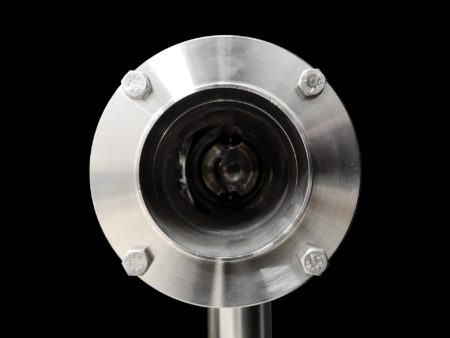 In many of today’s newer applications, the surface finish of the flange is almost always something that must be addressed due to the popularity of selecting SLS (single-layer steel) and MLS (multi-layer steel) gaskets for applications. The cost associated with the machining required to create and maintain these mirror-smooth surfaces is something that needs to be considered during the design phase.
In many of today’s newer applications, the surface finish of the flange is almost always something that must be addressed due to the popularity of selecting SLS (single-layer steel) and MLS (multi-layer steel) gaskets for applications. The cost associated with the machining required to create and maintain these mirror-smooth surfaces is something that needs to be considered during the design phase.
For some of you newer engineers, you probably see this as a way of life when it comes to designing a joint. However, it is important to know that there are other solutions that do not require the expensive machining for the flanges, and they work well in the aftermarket (where the stainless steel shims typically do not). Have we caught your interest? Keep on reading for more.
Does Surface Finish Matter?
Composite (a.k.a. perforated core, metal-reinforced) gasket materials are known for their performance and ability to seal at elevated temperatures. (See our blog post What Qualifies as ‘High Temperature’ When Talking About Gaskets?) Not only are they one of the best technologies out there for high-temperature applications, they are also one of the best at compensating for imperfect flanges.
Imperfect flanges…this leads us to think of two questions immediately.
1. What causes imperfect flanges?
They can be caused by many things, all of which cause detriment to the joint if there isn’t a proper gasket material holding the seal. Imperfect flanges can be a result of cast surfaces, improper machining, temperature distortion, or damage from gasket removal, to name a few.
2. Why are composites good at compensating for imperfect flanges?
This is due to the construction of the materials. The laminate is comprised of a compressible facing material that will conform to flange irregularities and configurations, while a metal core provides rigidity and structure to the gasket while maintaining the facing against the flange.
One Less Worry
There is no perfect gasket material. However, it is important to do your homework on the various technologies and decide what is going to reduce the risk (and the cost) the most for you in your design. While it is comfortable to keep using a technology because you’ve used it in the past, it is good to at least look around once in a while to be sure you have the best fit for a particular application. If a more forgiving gasket material is going to increase your chances of maintaining a seal, then talk to your trusted gasket material supplier to see what your options are.
Until next time! If you are interested in subscribing to Sealed-In’s blog posts, email sales@mtigasket.com.

In many of today’s newer applications, the surface finish of the flange is almost always something that must be addressed due to the popularity of selecting SLS (single-layer steel) and MLS (multi-layer steel) gaskets for applications. The cost associated with the machining required to create and maintain these mirror-smooth surfaces is something that needs to be considered during the design phase.
For some of you newer engineers, you probably see this as a way of life when it comes to designing a joint. However, it is important to know that there are other solutions that do not require the expensive machining for the flanges, and they work well in the aftermarket (where the stainless steel shims typically do not). Have we caught your interest? Keep on reading for more.
Does Surface Finish Matter?
Composite (a.k.a. perforated core, metal-reinforced) gasket materials are known for their performance and ability to seal at elevated temperatures. (See our blog post What Qualifies as ‘High Temperature’ When Talking About Gaskets?) Not only are they one of the best technologies out there for high-temperature applications, they are also one of the best at compensating for imperfect flanges.
Imperfect flanges…this leads us to think of two questions immediately.
1. What causes imperfect flanges?
They can be caused by many things, all of which cause detriment to the joint if there isn’t a proper gasket material holding the seal. Imperfect flanges can be a result of cast surfaces, improper machining, temperature distortion, or damage from gasket removal, to name a few.
2. Why are composites good at compensating for imperfect flanges?
This is due to the construction of the materials. The laminate is comprised of a compressible facing material that will conform to flange irregularities and configurations, while a metal core provides rigidity and structure to the gasket while maintaining the facing against the flange.
One Less Worry
There is no perfect gasket material. However, it is important to do your homework on the various technologies and decide what is going to reduce the risk (and the cost) the most for you in your design. While it is comfortable to keep using a technology because you’ve used it in the past, it is good to at least look around once in a while to be sure you have the best fit for a particular application. If a more forgiving gasket material is going to increase your chances of maintaining a seal, then talk to your trusted gasket material supplier to see what your options are.
Until next time! If you are interested in subscribing to Sealed-In’s blog posts, email sales@mtigasket.com.

In many of today’s newer applications, the surface finish of the flange is almost always something that must be addressed due to the popularity of selecting SLS (single-layer steel) and MLS (multi-layer steel) gaskets for applications. The cost associated with the machining required to create and maintain these mirror-smooth surfaces is something that needs to be considered during the design phase.
For some of you newer engineers, you probably see this as a way of life when it comes to designing a joint. However, it is important to know that there are other solutions that do not require the expensive machining for the flanges, and they work well in the aftermarket (where the stainless steel shims typically do not). Have we caught your interest? Keep on reading for more.
Does Surface Finish Matter?
Composite (a.k.a. perforated core, metal-reinforced) gasket materials are known for their performance and ability to seal at elevated temperatures. (See our blog post What Qualifies as ‘High Temperature’ When Talking About Gaskets?) Not only are they one of the best technologies out there for high-temperature applications, they are also one of the best at compensating for imperfect flanges.
Imperfect flanges…this leads us to think of two questions immediately.
1. What causes imperfect flanges?
They can be caused by many things, all of which cause detriment to the joint if there isn’t a proper gasket material holding the seal. Imperfect flanges can be a result of cast surfaces, improper machining, temperature distortion, or damage from gasket removal, to name a few.
2. Why are composites good at compensating for imperfect flanges?
This is due to the construction of the materials. The laminate is comprised of a compressible facing material that will conform to flange irregularities and configurations, while a metal core provides rigidity and structure to the gasket while maintaining the facing against the flange.
One Less Worry
There is no perfect gasket material. However, it is important to do your homework on the various technologies and decide what is going to reduce the risk (and the cost) the most for you in your design. While it is comfortable to keep using a technology because you’ve used it in the past, it is good to at least look around once in a while to be sure you have the best fit for a particular application. If a more forgiving gasket material is going to increase your chances of maintaining a seal, then talk to your trusted gasket material supplier to see what your options are.
Until next time! If you are interested in subscribing to Sealed-In’s blog posts, email sales@mtigasket.com.
